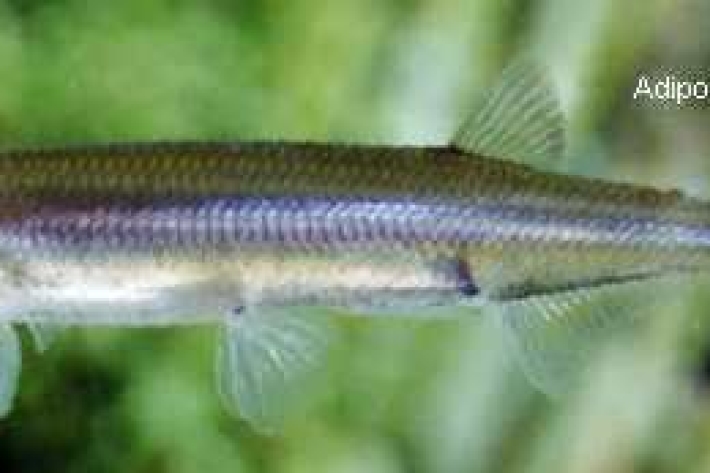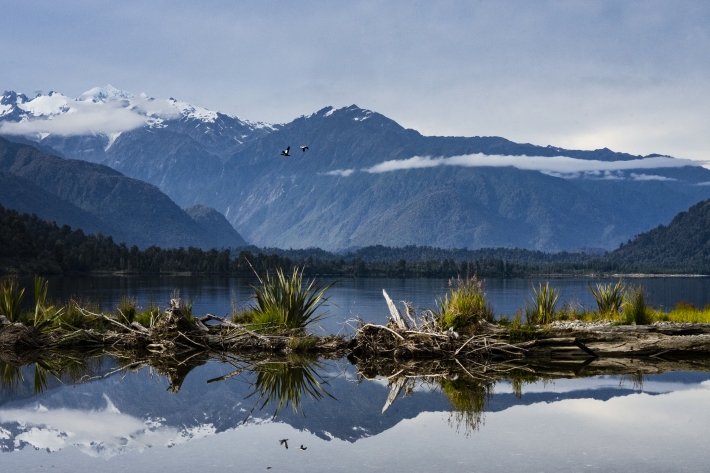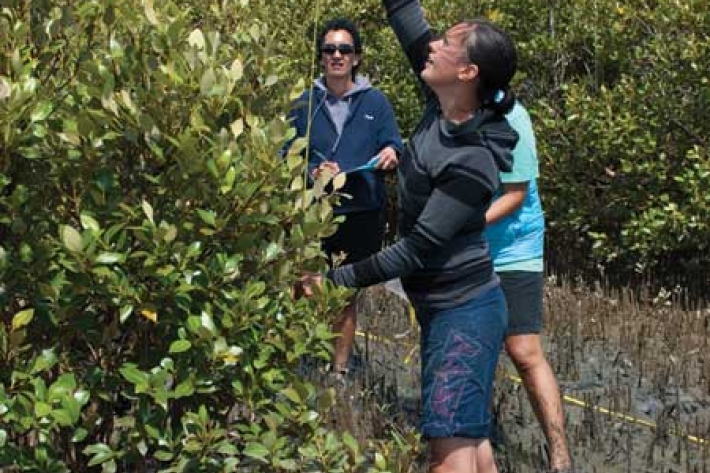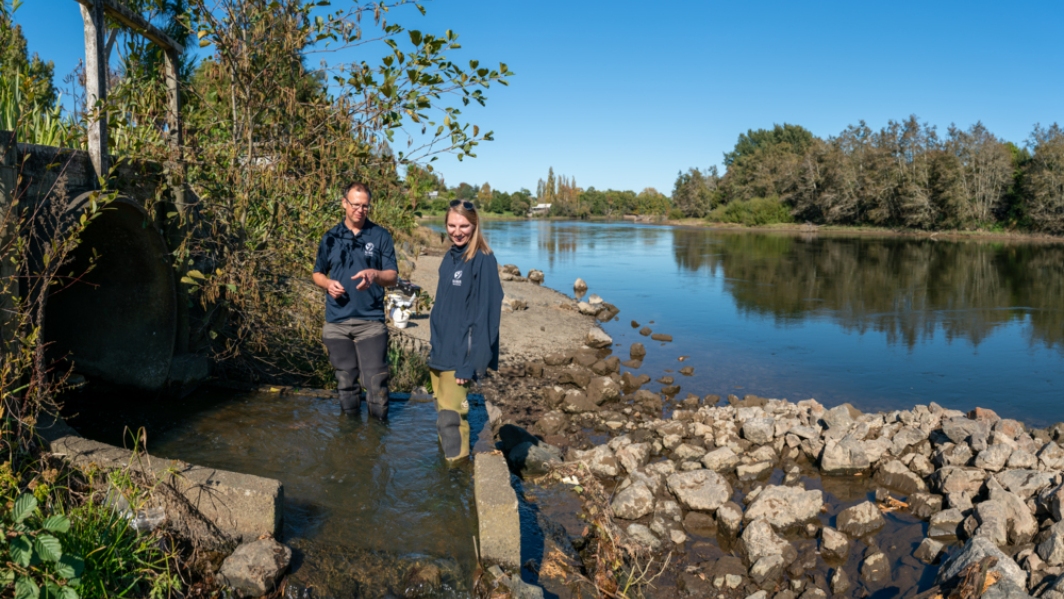-

Conceptual models
We've developed conceptual models for each of our study species. These models describe our current understanding of the factors influencing their distribution and abundance in the Te Arawa lakes, as well as the relationships between the various factors. -

Sustainable management framework for Te Arawa Lakes customary fisheries
Research ProjectNIWA and the Te Arawa Lakes Trust have developed a sustainable management framework for customary fisheries in Te Arawa lakes, as part of a joint 3 year research programme. -

Freshwater Update
Publication seriesA regular newsletter that includes a seasonal review and outlook for New Zealand's water resources, and an update on some of NIWA's freshwater research. -

Estuary monitoring by communities
These guidelines outline a recommended minimum set of methods for a community group interested in following habitat changes in an estuary. -

SWAT Workshop 2
Ahrens-PAH bioavailability in estuarine sediments
Ahrens-UV-enhanced PAH toxicity
Bluett-Atmospheric transport of vehicle contaminants
Clearwater-Metal uptake through aquatic foodwebs
Depree-PAH binding to stream dissolved organic matter
Depree-PAH distribution in estuarine sediments
Elliott-Urban stream hydrology
Golding-Caged invertebrate responses to stream water quality
Golding-Invertebrate uptake of fine particulate metals
Hickey-Bioaccumulation and chronic toxicity
Hickey-Habitat and stress responses
Mathieson-Zinc con -

SWAT Workshop 1
Accumulation in estuaries (Bruce)
Chemical contamination (Mike)
Insitucages (Lisa)
Invertebrate mesocosms (Chris)
Managing flows (Sandy)
Metal speciation (Kerry)
Organics in urban streams (Geoff)
Overview of SWAT programme (Mike)
PAH in NZ estuaries (Geoff)
Stream stability tools (Bob S)
Testing metal toxicity in estuaries (David)
Transport effects (Gerda)
Vegetated soil systems (Julie)
What is sustainable habitat (Mike)
Back to S.W.A.T. page -

Estuaries publications
Where an online version is not available, a PDF is provided. Use your browser’s Back button to return to this page.
Bell, R.; Green, M.; Hume, T.; Gorman, R. (2000). What regulates sedimentation in estuaries? Water & Atmosphere 8(4): 13–16.
Davies-Colley, R.; Nagels, J.; Donnison, A.; Muirhead, R. (2004). Flood flushing of bugs in agricultural streams. Water & Atmosphere 12(2): 18–20.
Green, M. (2003.) The dance of the turbid fringe. Water & Atmosphere 11(2): 20–21.
Green, M.; Ellis, J.; Schwarz, A.-M.; Lind, D.; Bluck, B. (2003). -

Resource Management Act
The Resource Management Act 1991 (RMA) dictates how we are to manage our physical environment, including the coast and estuaries. -

Models
A model is a representation of a “real thing”. Usually, the model is simpler in some or many ways than the real thing; the model simulates the behaviour of the real thing; and the model can be used to predict the future behaviour of the real thing. -

Monitoring
Monitoring is often an expensive exercise, but it does not have to be. -

What now?
Estuaries are more than just the mudflats that we cross on the way to the beach. Of course they have intrinsic value – what natural environment doesn’t? – but they also provide us humans with a range of ecological services that help to sustain the quality of our environment, and with amenities that we all enjoy, and sometimes profit from. -

The life of an estuary
An estuary is a semi-enclosed embayment, with a free connection to the sea at one end and a freshwater supply at the other, and within which fresh and salty waters mix.

